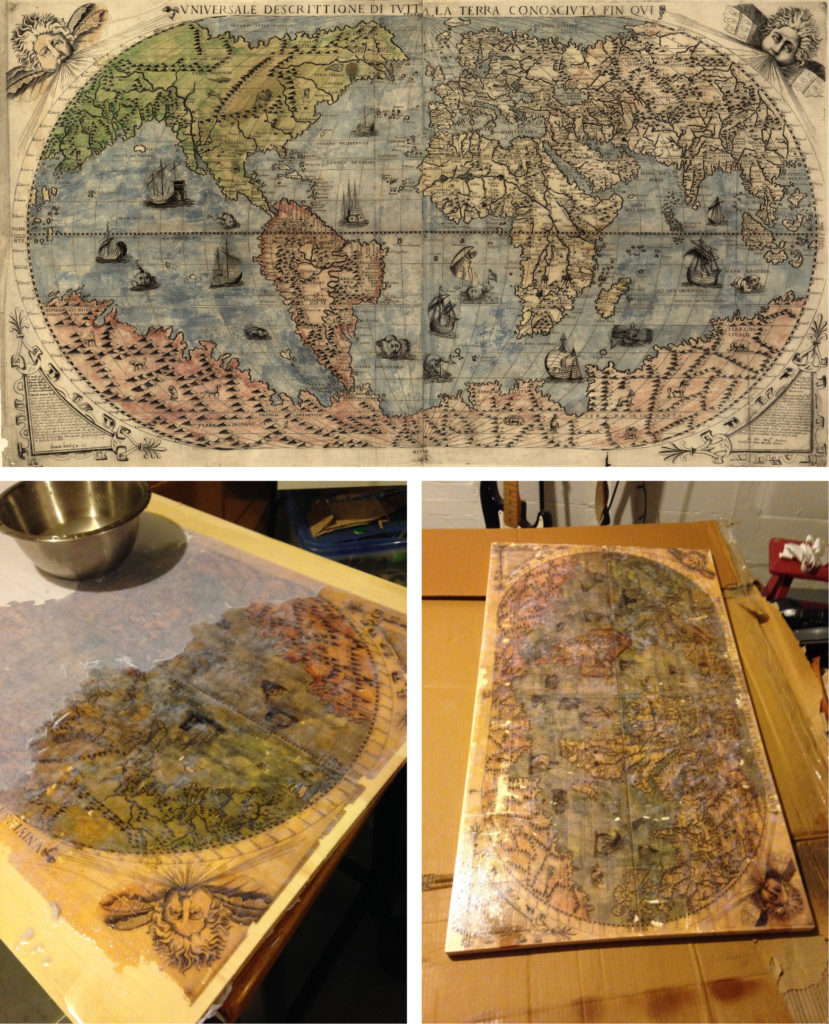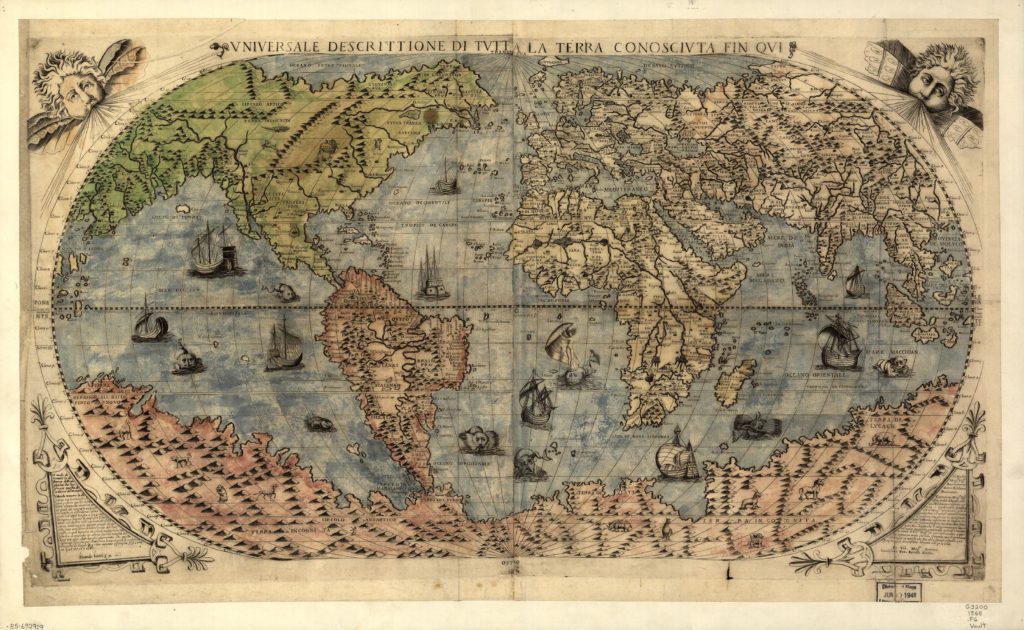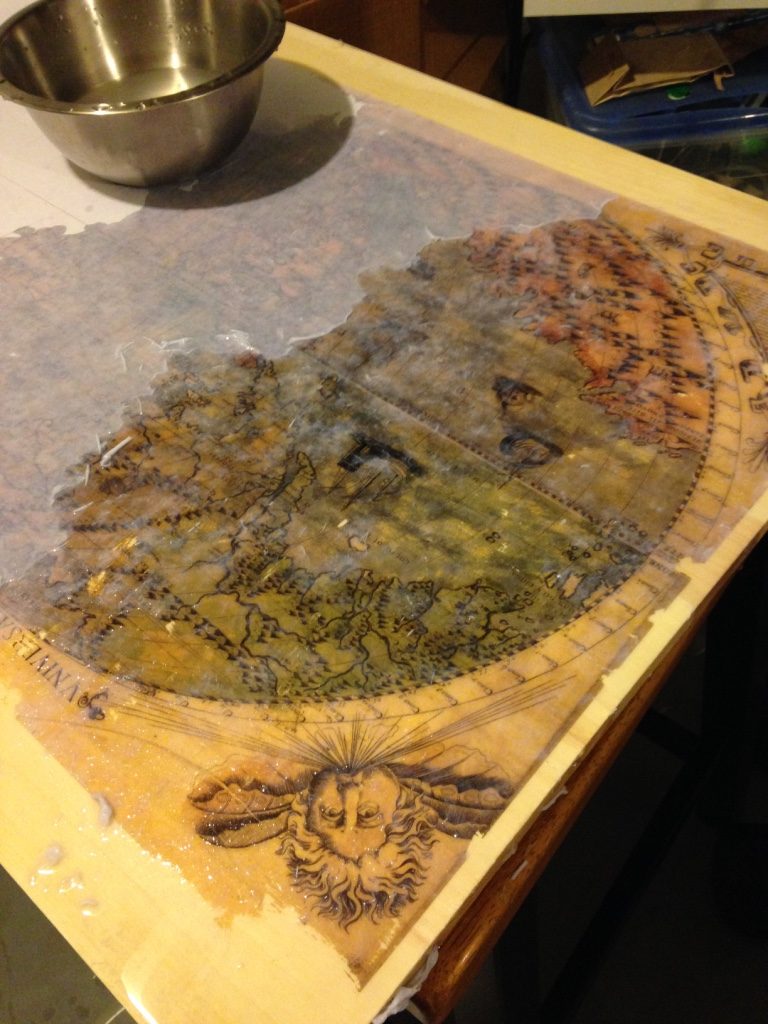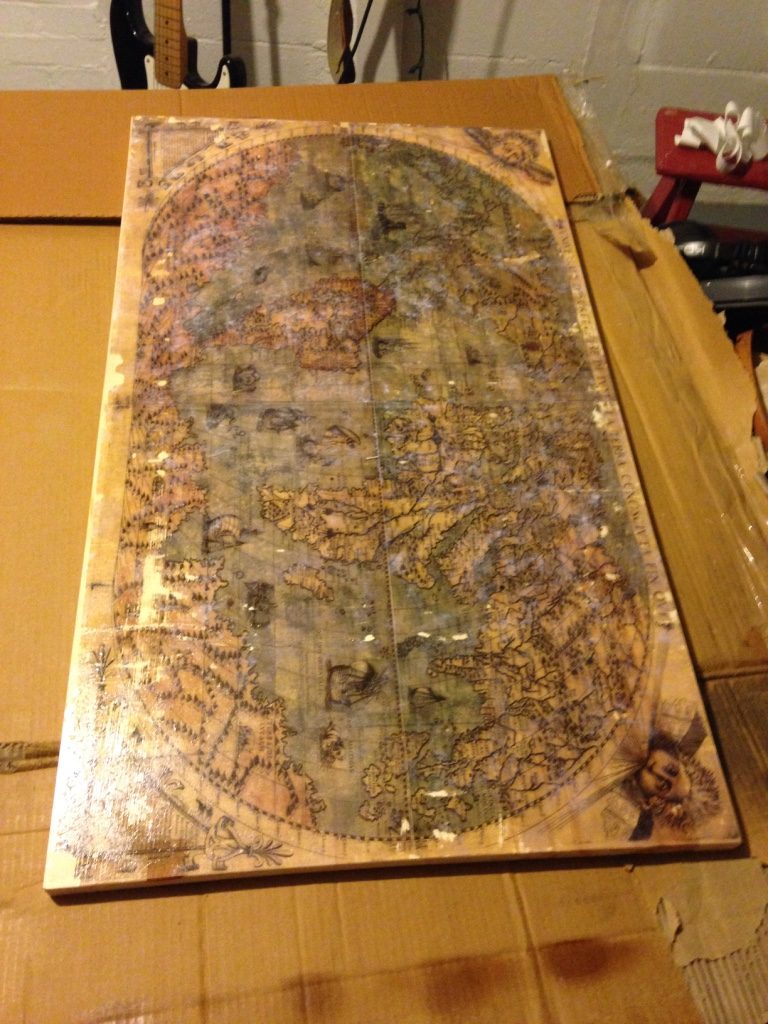
This map of the world was completed by Spanish master cartographer Paolo Forlani in the year 1565. I first stumbled across a large faded print of it at an old Spanish fort in Texas around 2009, and snapped a photograph at that time. The print was locked behind scratched up plexiglas with no reference to what it was, so I had to do some sleuthing to track down its origin. It was- and remains- one of the most beautiful maps I have seen. It speaks a history in what it details. The Great Lakes are an abstract italic “LAGO”. Notice there is no Pacific Ocean. There are sea monsters everywhere, angels blowing the trade winds, beautiful earth tones. I immediately wanted this on my wall one day.

In more recent years I identified the map origin and began seeking full-size prints online. Nobody seemed to produce or sell anything of the sort, so I decided to just create my own and tracked down a hi-res version of the map on Reddit. It was at this point I realized it would be even cooler if I could somehow have the map on wood to achieve an antique aesthetic and resilient artifact worthy of the original map’s integrity. But how?
It turns out laser prints allow ink transfer from paper to wood. A quick search and you will find tutorials on how to do this with Mod Podge adhesive + water. The process requires powder pigment and inkjet will not work, so this is not a task for a typical at-home printer.

The tricky part here was getting it to be full-size at 30″ wide, when most color laser prints max out at 12″ x 18″. I ended up having to get creative. I placed the full-size hi-res map in Adobe Illustrator, then carefully aligned the map to print tiled onto four 12″ x 18″ color laser prints, but using the East-West Equator and North-South Prime Meridian of the map itself to slice it into four pieces that would effectively “hide” my seams. When I assembled the prints for wood transfer I tried to obscure the seams regardless, but locating them along these fundamental map lines worked well.

Ultimately the final board took a great deal of staging and preparation prior to three painstaking hours of wet paper removal to be ready to trim, sand, and seal. The seal really brings out the pigment and makes residual paper very transparent. It also took me three attempts to get right. If I can lend one bit of advice in this regard, it is to be very swift, even, and deliberate when applying the Mod Podge. Too much adhesive and the glue will pool, causing the paper + pigment to completely rip away from the wood as you onerously undergo the wet process of paper removal. Some of this is unavoidable and lends to the antiqued map character, but large swaths of this are devastating. Too little adhesive and the paper bubbles up without sticking at all. The process can be riddled with snares, but a thin + even coat of Mod Podge followed by a smooth + evenly rolled out laser print will achieve the desired result. I have done this with individual portraits too, and these proved much easier.
After a few requests I considered making these to sell. Maybe I will, one day, for the right price. There are a couple more maps I intend to transfer to wood first.